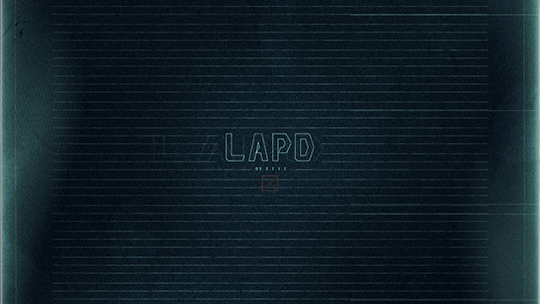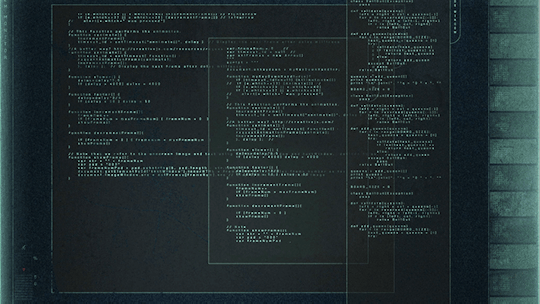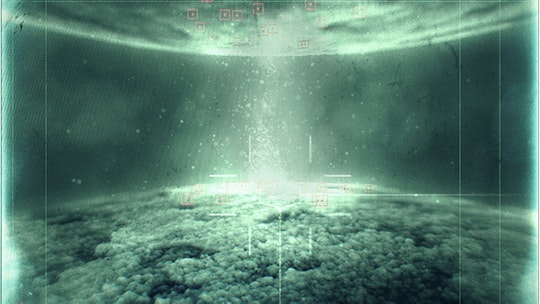
Blade Runner 2049 Into the future with Alcon Entertainment’s Blade Runner 2049, Territory Studio and Cinema 4D
If there is one film from the last 40 years that was so far ahead of its time it still looks great today, it’s Blade Runner. The seminal cyberpunk film, based on a Phillip K. Dick short story, featured ground-breaking visuals and a future more dark and moody than anything before. Back to the current day, and Alcon Entertainment's follow-up to Ridley Scott's 1982 masterpiece carried almost impossible-to-meet expectations, heaping pressure on all the VFX companies working on it.
For Territory Studio, it all started when Blade Runner 2049 Supervising Art Director Paul Inglis approached the company during pre-production. Peter Eszenyi, creative lead for Territory, explained the initial concept: “There was no specific brief at the outset. We went to Budapest to speak to Paul Inglis and Director Denis Villeneuve, who outlined what the film was about thematically and what the Blade Runner universe (some 30 years after the original) contained in terms of progression and context. We also talked about how technology could fit into that as a supporting narrative device, and how he felt that technology should look and feel in the context of the larger themes.”
Watch Territory Studio's BladeRunner2049 UI Reel here.
The task then was to create graphics for a variety of different screens, from monitors in the LAPD office to inside the Wallace Library and Deckard’s penthouse. The team of six core members, scaling up to 10 when needed, worked from May to November, 2016, and produced over 100 original screens across 15 sets.
However, instead of simply extrapolating from the first film, Director Villeneuve postulated a world in which there had been an apocalyptic event that wiped out digital capability and files. It was from that base mark from which the technology would develop, making it, if anything, even more of a challenge. Peter revealed, “It was our deep experience of designing for film narratives and creating visual narrative devices that support plot, character and performance that enabled us to take such a highly experimental approach with confidence. Denis didn’t want to reference the original film directly but wanted a distinct look and feel to this technology. Our task was to reinvent tech as we know it. He was specific in his directions about wanting that technology to feel organic, abstract, optical and physical. So, for this project, we didn’t design interface overlays but the whole system for each type of technology, from the creation of footage, optical effects and projections, etc.”
“It was the ease of use and the speed and stability of Cinema 4D that allowed us to experiment whilst being able to keep to the tight deadlines.”
Nowhere is this more apparent than the morgue scene, which is a subtle reference to how Deckard used technology in the first film but incorporates a more mechanical and optical framework. The aim for Territory was to create a series of images that show bone tissue under increasing magnification that suggested an electron microscope but with more physicality and drama. Using art department references of pelvic bone, they created a series of images that showed the bone tissue in increasing magnification and abstraction, along with a mechanical system of optical lenses that physically shunted into place to lead up to the reveal moment when Officer K, Joshi and the audience see the serial number. Peter added, “It was a pivotal but very complex shot. The whole scene was carefully choreographed and shot with screens on set so that the actors could really perform against a live sequence of images.”
There was, in fact, a lot of planning before even starting to work with Cinema 4D. The Territory team spent time researching and experimenting with alternative methods that could replace LED screen bioluminescence. They experimented by combining optical lenses/projectors and macrophotography with photogrammetry (fruit/meat) and graphic techniques. The experimental process led to the development of some interesting and unique effects that were used later, including in the LAPD baseline scan test for detecting the mental states of replicant officers. Rather than showing an iris, as in the original, this new test showed the view through the optic nerve, suggesting neural activity in the replicant. The intention was not to mirror human brains or neurons but to achieve a level of abstraction in the images that had an aesthetic as much as organic qualities. You can thank some dried grapefruit for those images.
There were other scenes, though, that featured more traditional CG techniques that were created with Cinema 4D. Territory used simulations in the NAP (neighbor's apartment) sequence, where Officer K was scanning the little wooden horse he had found. Peter went into detail about how it was done: “We modelled the toy and used it to constrain fluid simulations done with X-Particles to the inside of the volume. We used different modifiers, mainly turbulence, to art direct the particles to behave in a way that was answering the requirement for this set. We also used particle simulations for the ‘pilotfish’ drone sequences as well as some spinner screens where the outside environment was meant to be shown in an unusual fashion. The organic, chaotic nature of these simulations contributed to the aesthetic.”
A lot of the film, produced by Andrew A. Kosove, Broderick Johnson, Cynthia Sikes Yorkin and the late Bud Yorkin, is dark with glowing neon, creating high-contrast scenes. On top of this there’s a lot of atmospheric dust and grime. Getting the CG displays to be consistent with everything else on screen posed a number of challenges. Peter explained how this was approached: “We had access to concept art so we got a fairly good idea about the intent for the shot but we did some camera tests where Roger Deakins used the animations provided by Territory to check the light levels on the particular set. We had to tweak the colors on the LAPD screens a bit to fit into the lighting setup that Roger had created. We also did tests, in-house, to make sure that the reflected light from the screens did what Denis wanted to see on the faces of the characters.”
This was also the case with Officer K’s Spinner, which featured a set of displays for navigation, communication, scanning and surveillance monitors. The screen graphics needed to reflect K’s low status as replicant and blade runner so his Spinner and monitors are old and battered. Screenburn, ghosting, glitching, color degradation and texture effects were all created in Cinema 4D to suggest that he was making do with out-of-date technology.
The end result of Territory’s work was terabytes of data and more than an hour of animated content that was delivered to production or distributed to the other VFX vendors for incorporating into their shots.
With such a challenging and high-profile project, Peter acknowledged that it was, “the ease of use and the speed and stability of Cinema 4D that allowed us to experiment whilst being able to keep to the tight deadlines.”
Duncan Evans is the author of Digital Mayhem: 3D Landscapes and Digital Mayhem:
3D Machines and was the launch Editor of 3D Artist magazine
All images courtesy of Alcon Entertainment and Territory Studio














